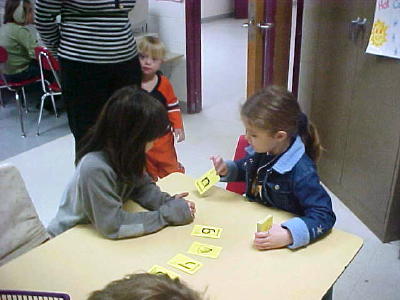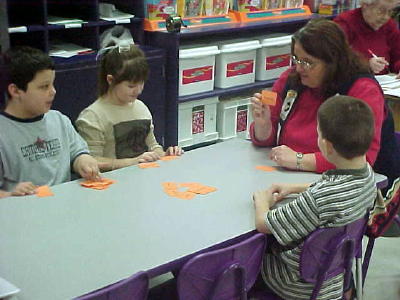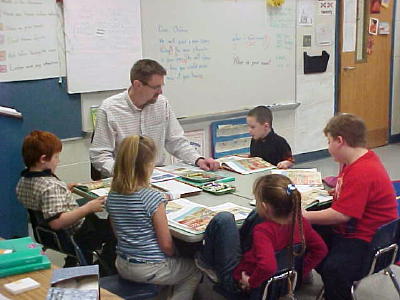ARNOLDSBURG TEACHERS USE LITERACY WORKSTATIONS

Lexi Webb and Rebecca Armstrong using peer tutoring
Submitted by Tammey Webb
Arnoldsburg Elementary School teachers have been hard at work putting literacy workstations into place. The teachers use a variety of stations such as: big book, writing, vocabulary, spelling, listening, computer and reading centers just to name a few. Students are learning more, reading more, and doing better with spelling, using the literacy workstations.
What are literacy stations you might ask? Literacy workstations are certain areas within the classroom where students work alone, with a partner, or with a small group. Instructional materials may be used to explore and expand their interest in learning. The workstations require little or no teacher assistance and it is a time where students interact and relate to their peers.


The students in Kathy Nichols' Kindergarten classroom are divided into 5 groups for an hour. They participate in vocabulary, technology, handwriting/creative writing, listening/book and skill centers. All centers are to reinforce learning that has been previously taught. The students work in groups of 3-4 and receive assistance from a teacher or peer as needed. A simple rotation chart is used to move each group from station to station. The time goes by quickly and the movement every 10 minutes helps keep the children focused. Of course, group rotations will go according to each grade level. Older students may have more time for certain stations.
Patty Hicks' second grade classroom is set up with 7 literacy stations, with 2 more stations being planned. The stations are filled with activities that are related to the Houghton Mifflin Reading series. Independent reading, writing, listening, computers and small group activities are among the challenges available to the students. These stations not only enhance reading skills, but also promote cooperation among the students. Students work at the stations for 30 minutes, rotating from one station to another daily. Activities are changed at each station every week. Mrs. Hick's, along with the Title 1 teachers, monitor students' progress to ensure that maximum learning is taking place.
Charles Thomas, first grade teacher, uses literacy workstations to enhance his Language Arts class. The workstations consists of a "Working with Words" station, which is managed by volunteer grandmother, Pat Pittman. In this station students are asked to manipulate sounds, letter tiles, review sounds, and the spellings of words. This station alternates with the classroom library where students complete 10 minutes of silent reading daily. The Title 1 teacher, Tammey Webb, and Special Education teacher, Lori Parsons, manage the "Reteach" workstation. This station reinforces reading skills that have been taught to the class and help students with the workbook pages. This workstation alternates with the following independent workstations listening/book, Light Span, or computers. These stations also reinforce skills already taught in the whole class setting. Mr. Thomas manages a small group of students that engage in various reading instruction from reading for fluency, paired reading, and working with students independently.
Teachers enjoy using literacy workstations because it allows the students to explore reading on their own, it gives the teacher the opportunity to work with students on an individual basis and students are able to use cooperative learning to enhance their learning.